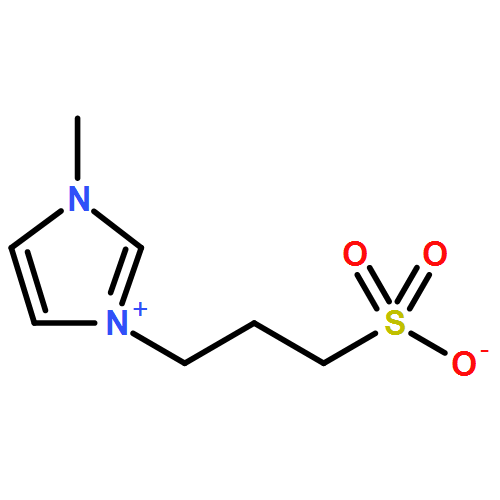Co-reporter: Tianpei Huang, Zhirong Xie, Qingyin Wu and Wenfu Yan
pp: 3958-3963
Publication Date(Web):14 Jan 2016
DOI: 10.1039/C5DT05055C
A series of temperature-dependent gel-type ionic liquid compounds have been synthesized from 1-(3-sulfonic group) propyl-3-methyl imidazolium (abbreviated as MIMPS) and three vanadium-substituted heteropoly acids H5SiW11VO40, H5SiMo11VO40 and H7SiW9V3O40. The designed and synthesized gel-type polyoxometalate ionic liquids (POM-ILs) have demonstrated a tendency to exhibit a layered structure. Moreover, they can undergo a phase transformation from a viscous gel-state to a liquid-state below 100 °C, and ionic conductivity up to 10−3 S cm−1 was observed at 120 °C. Cyclic voltammetry was carried out to study their electrochemical properties in organic solutions, and it was found that the oxidizability of the three POM-ILs decreases in the order: [MIMPS]7SiW9V3O40 > [MIMPS]5SiMo11VO40 > [MIMPS]5SiW11VO40. This result indicates that the redox behavior can be tuned by changing the chemical composition of the heteropolyanions.
Co-reporter: Tianpei Huang, Zhirong Xie, Qingyin Wu and Wenfu Yan
pp: NaN3963-3963
Publication Date(Web):2016/01/14
DOI: 10.1039/C5DT05055C
A series of temperature-dependent gel-type ionic liquid compounds have been synthesized from 1-(3-sulfonic group) propyl-3-methyl imidazolium (abbreviated as MIMPS) and three vanadium-substituted heteropoly acids H5SiW11VO40, H5SiMo11VO40 and H7SiW9V3O40. The designed and synthesized gel-type polyoxometalate ionic liquids (POM-ILs) have demonstrated a tendency to exhibit a layered structure. Moreover, they can undergo a phase transformation from a viscous gel-state to a liquid-state below 100 °C, and ionic conductivity up to 10−3 S cm−1 was observed at 120 °C. Cyclic voltammetry was carried out to study their electrochemical properties in organic solutions, and it was found that the oxidizability of the three POM-ILs decreases in the order: [MIMPS]7SiW9V3O40 > [MIMPS]5SiMo11VO40 > [MIMPS]5SiW11VO40. This result indicates that the redox behavior can be tuned by changing the chemical composition of the heteropolyanions.
